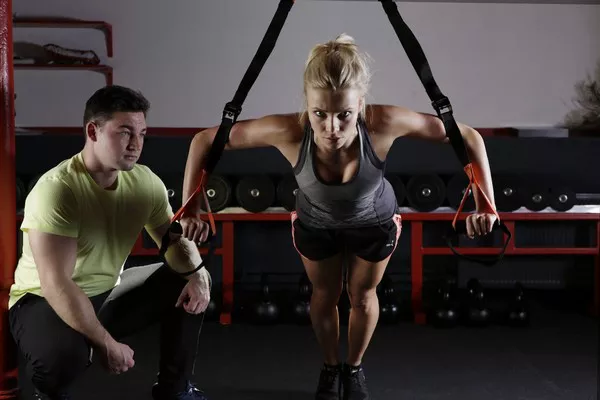Cardiovascular endurance, also known as cardiorespiratory fitness or aerobic capacity, is a crucial component of overall health and fitness. It refers to the ability of the heart, lungs, and blood vessels to supply oxygen to working muscles during prolonged physical activity. Enhancing cardiovascular endurance is essential for improving overall health, reducing the risk of chronic diseases, and enhancing athletic performance. This article explores the various exercises and techniques you can use to measure and improve your cardiovascular endurance.
Understanding Cardiovascular Endurance
Before diving into specific exercises, it’s important to understand what cardiovascular endurance is and why it matters. Cardiovascular endurance is the efficiency with which your heart and lungs work together to provide your body with the oxygen it needs during sustained physical activity. High cardiovascular endurance allows for better energy production, reduces fatigue, and improves overall physical performance.
Improving cardiovascular endurance offers numerous benefits, including:
Enhanced Heart Health: Regular aerobic exercise strengthens the heart, making it more efficient at pumping blood.
Better Lung Function: Improved cardiovascular fitness enhances lung capacity and efficiency.
Increased Metabolic Rate: Aerobic activities boost your metabolism, aiding in weight management.
Improved Mental Health: Regular exercise releases endorphins, reducing stress and improving mood.
Greater Stamina and Energy Levels: Enhanced endurance allows you to perform daily activities with less fatigue.
Key Factors in Cardiovascular Endurance
Several factors influence cardiovascular endurance, including:
Genetics: Some people naturally have a higher capacity for endurance activities.
Age: Endurance tends to decline with age, but regular exercise can mitigate this effect.
Training: Consistent aerobic exercise can significantly improve cardiovascular endurance.
Nutrition: A balanced diet rich in nutrients supports overall health and endurance.
Hydration: Proper hydration is crucial for maintaining cardiovascular function during exercise.
Exercises to Measure Cardiovascular Endurance
There are various exercises and tests designed to measure cardiovascular endurance. These tests typically involve prolonged physical activity and monitoring heart rate, breathing, and perceived exertion. Here are some of the most effective exercises for assessing cardiovascular endurance:
1. The VO2 Max Test
The VO2 max test is considered the gold standard for measuring cardiovascular endurance. VO2 max refers to the maximum amount of oxygen your body can utilize during intense exercise. It is typically measured in a laboratory setting using a treadmill or cycle ergometer and specialized equipment to analyze respiratory gases.
Procedure:
The test begins at a low intensity, with gradual increases in speed and incline (for a treadmill) or resistance (for a cycle ergometer).
The participant wears a mask connected to a machine that measures the volume and gas concentrations of inhaled and exhaled air.
The test continues until the participant reaches exhaustion or cannot maintain the required intensity.
Benefits:
Provides an accurate measurement of aerobic capacity.
Helps tailor training programs to individual fitness levels.
2. The Beep Test (Multistage Fitness Test)
The beep test, also known as the shuttle run test, is a popular field test for measuring cardiovascular endurance, particularly in athletes and military personnel.
Procedure:
Participants run back and forth between two markers set 20 meters apart, timed to a series of audio beeps.
The pace of the beeps increases with each level, requiring participants to run faster.
The test continues until the participant can no longer keep up with the beeps.
Benefits:
Easy to administer and requires minimal equipment.
Can be conducted with large groups simultaneously.
3. The Cooper Test
The Cooper test, developed by Dr. Kenneth H. Cooper, is a simple and effective way to measure cardiovascular endurance. It involves running as far as possible in 12 minutes.
Procedure:
Participants run or walk on a track or flat surface for 12 minutes.
The total distance covered is recorded.
Benefits:
Simple to conduct and requires no special equipment.
Provides a clear measure of endurance that can be easily tracked over time.
4. The Rockport Walking Test
The Rockport walking test is a submaximal test suitable for individuals of all fitness levels, including those who may be unable to run.
Procedure:
Participants walk one mile as quickly as possible on a flat surface.
Heart rate is measured immediately after completing the walk.
Benefits:
Low impact and suitable for a wide range of fitness levels.
Provides a good estimate of VO2 max without the need for intense exercise.
5. The Step Test
The step test is a convenient and low-cost method for assessing cardiovascular endurance, often used in fitness assessments.
Procedure:
Participants step up and down on a platform (usually 12 inches high) at a consistent rate for a set period (usually three minutes).
Heart rate is measured immediately after the test.
Benefits:
Easy to administer and requires minimal equipment.
Suitable for people of various fitness levels.
Training to Improve Cardiovascular Endurance
Measuring your cardiovascular endurance is just the first step. To see improvements, you need to engage in regular aerobic exercise. Here are some effective training methods to enhance your cardiovascular endurance:
1. Continuous Training
Continuous training, also known as steady-state training, involves maintaining a consistent level of intensity for a prolonged period. This type of training is effective for building a strong aerobic base.
Activities:
Running or jogging
Swimming
Cycling
Rowing
Guidelines:
Aim for 30-60 minutes of continuous activity at a moderate intensity.
Maintain a steady pace that allows you to sustain the activity without excessive fatigue.
2. Interval Training
Interval training involves alternating periods of high-intensity exercise with periods of lower-intensity recovery. This method is highly effective for improving both aerobic and anaerobic endurance.
Activities:
High-intensity interval training (HIIT) sessions
Sprint intervals on a track or treadmill
Cycling with alternating sprints and recovery periods
Guidelines:
Work at high intensity (e.g., 85-95% of max heart rate) for short bursts (e.g., 30 seconds to 2 minutes).
Follow with lower-intensity recovery periods (e.g., 1-4 minutes).
Repeat the cycle for 20-30 minutes.
3. Fartlek Training
Fartlek, a Swedish term meaning “speed play,” combines continuous training with interval training. It involves varying your pace and intensity throughout a workout.
Activities:
Outdoor running with spontaneous changes in speed and intensity.
Cycling with varying paces and effort levels.
Guidelines:
Mix high-intensity efforts with lower-intensity recovery periods.
Use natural terrain features (e.g., hills, flat sections) to vary intensity.
4. Cross-Training
Cross-training involves engaging in a variety of aerobic activities to enhance overall cardiovascular fitness and reduce the risk of overuse injuries.
Activities:
Swimming
Rowing
Elliptical training
Group fitness classes
Guidelines:
Incorporate different activities into your weekly routine.
Aim for a mix of low-impact and high-impact exercises.
5. Long Slow Distance (LSD) Training
LSD training involves exercising at a low to moderate intensity for an extended duration. This method is particularly beneficial for building endurance and stamina.
Activities:
Long-distance running or walking
Extended cycling sessions
Long swims
Guidelines:
Exercise at a comfortable, conversational pace.
Aim for sessions lasting 60 minutes or longer.
Conclusion
Measuring and improving cardiovascular endurance is essential for achieving optimal health and fitness. By incorporating a variety of aerobic exercises and training methods into your routine, you can enhance your cardiovascular health, boost your endurance, and enjoy the numerous benefits of a fit and active lifestyle. Regular testing and monitoring will help you track your progress and stay motivated on your fitness journey. Whether you’re an athlete aiming to improve performance or simply seeking to improve your overall health, prioritizing cardiovascular endurance will help you achieve your goals.
[inline_related_posts title=”You Might Be Interested In” title_align=”left” style=”list” number=”6″ align=”none” ids=”9615,9547,9544″ by=”categories” orderby=”rand” order=”DESC” hide_thumb=”no” thumb_right=”no” views=”no” date=”yes” grid_columns=”2″ post_type=”” tax=””]

































